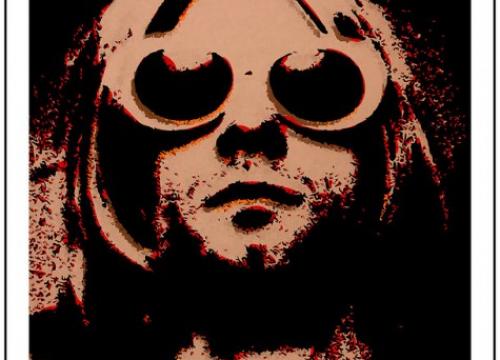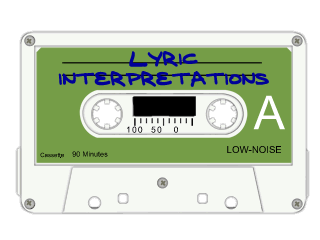Kurt Cobain’s Love-Hate Relationship With Punk Rock

It seems a natural progression to go from the crass, hard punk of the 1970s to Cobain’s (slightly) more melodic and angst-filled grunge. However, Cobain’s influences weren’t quite as simple as that, and any fan reading a biography might be intrigued to find some very un-Nirvana like bands topping Kurt’s list of favourite artists and albums.
It might be difficult for someone who grew up in America or the UK in the 1990s to understand, but if you go back only 10 years getting hold of music was a very different thing. I can understand this, because I grew up in South Africa, which took about 20 years to catch up to the brief era of HMV and Virgin Music stores, where you could buy just about everything.
It wasn’t hard to get hold of Nirvana albums (I had them all, and I definitely wasn’t a rich kid), but I was a staunch NoFX fan in my teen years, and buying one of their albums meant that you had to get a parent to agree to let you use their credit card to buy an album that was triple the price of the pop albums in your local CD store, and then wait six weeks for it to arrive.
This was the kind of environment Cobain grew up in – one where you heard about a band sometimes months or years before you even heard a snippet of them on the radio, let alone found one of their records in a store. And he was broke all the time.
Cobain’s First Punk Record
By the late 1970s Kurt had heard of punk music. He hadn’t heard any of it yet, but he loved what it seemed to represent. It had all of his values, and was made the way he believed music should be made. So imagine his disappointment when, in 1979 he pawned a large portion of his record collection to buy concert and bus tickets to go see a touring UK punk band, and they sucked. It didn’t sound anything like what it was supposed to sound like.
Cobain later bought Sandinista! by The Clash and some Sex Pistols albums, and found them more to his ideological, if not musical, tastes. He had great respect for the Pistols, saying that they were, “one million times more important than the Clash” in his posthumous journals.
Other Influences
Kurt’s other influences were massively varied, from obscure local folk bands to big names like Queen and Led Zeppelin. His favourite band by a huge margin was The Beatles, to whom he was exposed daily as a child. It might seem strange how someone who enjoyed what was traditionally mainstream rock and pop so much would come to be a figurehead for the counterculture.
But if you look at the way he hated his fame, and hated how most of his fans seemed to have misinterpreted his message and his music, it’s not that difficult to see why punk is the most important influence we should be looking at in Nirvana’s music. Sure, he idolized The Pixies and emulated their sound, and he said of REM, “If I could write just a couple of songs as good as what they’ve written … I don’t know how that band does what they do. God, they’re the greatest.” – but he didn’t think like those bands, didn’t live like them, and didn’t write music in the same way.
He wrote music because he was angry or upset or disillusioned with what he saw out of his bedroom window and on his way to the grocery store. He wrote music the way he did because he was passionate and creative but completely unguided in his creativity, and the greatest aspects of his talent. Punk music, while not providing a classic “musical” influence, provided an ideological one that, without his fans even knowing it, shaped them into a generation of new punk rockers.
Related: Nirvana Song Meanings

 A new era for Millennial favorite, Linkin Park
A new era for Millennial favorite, Linkin Park  Anime to watch for the soundtracks… and other reason...
Anime to watch for the soundtracks… and other reason... .jpg) Dolly, we need you
Dolly, we need you  The Stranger Things Effect: How new media is drawing...
The Stranger Things Effect: How new media is drawing...  The most underrated soundtrack of the early 2000s
The most underrated soundtrack of the early 2000s  Buy the Soundtrack, Skip the Movie: Brainscan (1994)
Buy the Soundtrack, Skip the Movie: Brainscan (1994)  Let’s Go to the Hop - Ignore That Door’s Four Bunnie...
Let’s Go to the Hop - Ignore That Door’s Four Bunnie...  Forgotten Weird Music Videos of the Ancient 80s | vol 3
Forgotten Weird Music Videos of the Ancient 80s | vol 3  Forgotten Weird Music Videos of the Ancient 80s | vol 2
Forgotten Weird Music Videos of the Ancient 80s | vol 2  Forgotten Weird Music Videos of the Ancient 80s | vol 1
Forgotten Weird Music Videos of the Ancient 80s | vol 1  Let’s Chase Taylor Swift Rumors
Let’s Chase Taylor Swift Rumors  When the Beatles Touched Off a Movie War
When the Beatles Touched Off a Movie War  When Mike Bloomfield Composed a Soundtrack For Andy ...
When Mike Bloomfield Composed a Soundtrack For Andy ...  Yet Another List of Bad Song Covers
Yet Another List of Bad Song Covers  Why Does Everybody Pick On Liberace?
Why Does Everybody Pick On Liberace?  Trainspotting Soundtrack Revisited : One of the Best...
Trainspotting Soundtrack Revisited : One of the Best...  Nicki Minaj and Megan Thee Stallion: Bringing Back t...
Nicki Minaj and Megan Thee Stallion: Bringing Back t...  Quirky Songs About Los Angeles
Quirky Songs About Los Angeles  Penguin Pete’s Obligatory Penguin Cafe Orchestra Post
Penguin Pete’s Obligatory Penguin Cafe Orchestra Post  Heart | How Bad Are Those Animals?
Heart | How Bad Are Those Animals?  That Time Ronnie James Dio Saved Black Sabbath’s Bacon
That Time Ronnie James Dio Saved Black Sabbath’s Bacon  What is a Left Hand Path? - Entombed and Swedish Dea...
What is a Left Hand Path? - Entombed and Swedish Dea...  Song Analysis Corner: Convoy (1975)
Song Analysis Corner: Convoy (1975)  What’s Up With Margaritaville?
What’s Up With Margaritaville?  This Album Links Duran Duran, Andy Warhol, and Kurt ...
This Album Links Duran Duran, Andy Warhol, and Kurt ...  Your Back-To-School Playlist
Your Back-To-School Playlist  Cucumber Castle | the other Bee Gees Movie
Cucumber Castle | the other Bee Gees Movie  Danny Elfman Scores New Film; Other Movie Weirdness!
Danny Elfman Scores New Film; Other Movie Weirdness!  Sparks Is Not Crying in Their Latte
Sparks Is Not Crying in Their Latte  Travis Scott : Rapper, Cannabis Entrepreneur, Filmmaker
Travis Scott : Rapper, Cannabis Entrepreneur, Filmmaker  Anders Runestad – Author and Music Blogger
Anders Runestad – Author and Music Blogger  What If They Really ARE Giants?
What If They Really ARE Giants?  Prince’s Underrated Under the Cherry Moon
Prince’s Underrated Under the Cherry Moon  Six Degrees of Blondie
Six Degrees of Blondie  Six Degrees of: Adam and the Ants
Six Degrees of: Adam and the Ants  Discovering Beat-Club | Vintage West German Music Show
Discovering Beat-Club | Vintage West German Music Show  Eurovision Contest Winners part 2
Eurovision Contest Winners part 2  Song Analysis Corner: Snoopy vs. the Red Baron | The...
Song Analysis Corner: Snoopy vs. the Red Baron | The...  Eurovision Contest Winners part 1
Eurovision Contest Winners part 1  KISS SUXX!
KISS SUXX!  You Haven’t Met Your Last Reefer Man
You Haven’t Met Your Last Reefer Man  Ruth Underwood and the “Zappa sound”
Ruth Underwood and the “Zappa sound”  Catchy Commercial Earworms | vol 2
Catchy Commercial Earworms | vol 2  Song Analysis Corner: “Trouble Every Day” | Frank Zappa
Song Analysis Corner: “Trouble Every Day” | Frank Zappa  Blues Music For Your Great Recession
Blues Music For Your Great Recession  We Can Fix America If We Just Bring Back Schoolhouse...
We Can Fix America If We Just Bring Back Schoolhouse...  Song Analysis Corner: Istanbul (Not Constantinople)
Song Analysis Corner: Istanbul (Not Constantinople)  Music To Shoot Down UFOs To
Music To Shoot Down UFOs To  Are You Ready For AI Music?
Are You Ready For AI Music?  How Dreary Was 1970s Adult Contemporary?
How Dreary Was 1970s Adult Contemporary?  I Just Called To Say Stevie Wonder's Song Deserved a...
I Just Called To Say Stevie Wonder's Song Deserved a...  "Knock On Wood" | The Real Song To Remember From Cas...
"Knock On Wood" | The Real Song To Remember From Cas...  Dr. Dre's Not Gonna Take This Anymore
Dr. Dre's Not Gonna Take This Anymore  Apache - The Shadows | A Surf-Rock Safari
Apache - The Shadows | A Surf-Rock Safari  New Year : New Music Artists You (Probably) Haven't ...
New Year : New Music Artists You (Probably) Haven't ...  Song Odyssey | I Put A Spell on You
Song Odyssey | I Put A Spell on You  KMart and S.S. Kresge | Music Mystery?
KMart and S.S. Kresge | Music Mystery?  Did I Ever Introduce You To Horrorpunk?
Did I Ever Introduce You To Horrorpunk?  Song Analysis Corner : The Coffee Song
Song Analysis Corner : The Coffee Song  Duran Duran Finally Got Inducted
Duran Duran Finally Got Inducted 